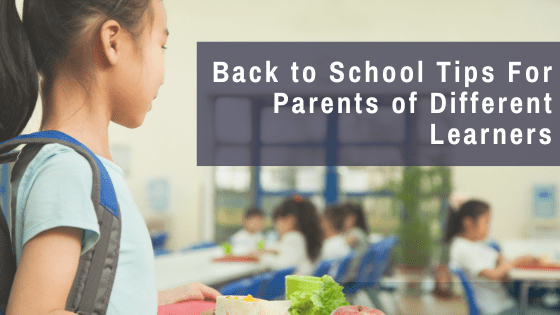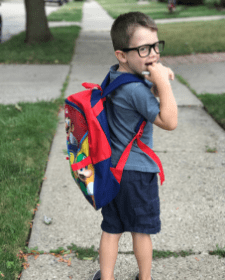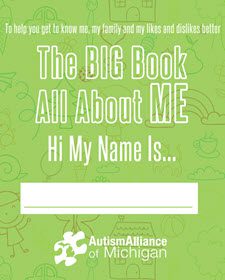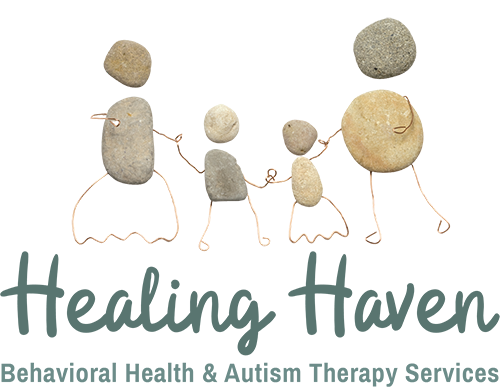
A few years ago we created a pretty extensive list of back to school tips for kids with autism. At first it seemed there wasn’t much more we could add to it. But upon further thought and research, we want to share more in-depth back to school tips and resources. Many of these ideas can benefit typical kids in addition to those with special needs or a learning disability. In this post we also connect you with some great resources to help you as you get ready for the new school year.
So why is preparing for the transition back to school so important, especially for different learners? By doing some preplanning, you can help reduce anxiety in your child about a new school year. You can also make sure your child has the proper support they need in their new classroom or new school. And with some advance preparation, you can create some important routines that we know many children rely on. Read on for helpful back to school tips that you can start on now.
Use a Back to School Countdown
Let’s face it, there is so much going on in the rush before school starts. You want to squeeze in the last free days of summer, while shopping for school supplies, new clothes and scheduling any needed doctor appointments. How can you cram anything else in? This Back to School Countdown from Understood.org offers some great ideas to get your child ready to go back to school. Not all of the tips may apply, but there are sure to be some that will help you, as well as your child, prepare for that first day back in the classroom.
In addition to the practical back to school tips for you, an actual countdown calendar can be helpful for your child. Create a calendar of the few weeks before school. With your child, cross off each day leading up to the first day of school. Doing so provides a visual for them to see when school starts and may help reduce some anxiety they may have.
Use Social Stories

Social stories are a great way communicate to your child what they can expect in a new situation, teach appropriate behavior, and much more. And thankfully there are a ton of free resources out there to help you so you don’t have to start from scratch. By creating a print social story, or using a topical video social story, you can help reduce anxiety your child may have about the new school year, new teacher, new classmates, new routine, etc.
Dyan from “And Next Comes L” has an extensive list of free back to school social stories you can download and print. She also includes some topical stories for times that may cause more stress and anxiety, like changing classes for gym, art or music. Additionally, she has a few video social stories about High School, riding the bus, listening to the teacher, how to greet people at school, and more!
Communicate With Their Teacher
Create a “get to know me” document or write a letter to your child’s teacher. By sharing your child’s diagnoses, strengths and weaknesses, dietary restrictions, sensory needs, things that interest them, and strategies that work for them, you are empowering your child’s teacher with important information for their success at school. There are a few templates available for introduction letters and “get to know me” documents.

- This Card to Help Teachers Get to Know Your Child is from Understood.org. Older kids who are able to write and communicate could complete it on their own, which will help them develop self-advocacy skills.
- Understood.org also has two different Back-to-School Introduction Letters for elementary and middle school students. They are fairly basic, but may be just what you need to communicate important information with your child’s teacher.
- For younger students, or those starting at a new school, a more robust document may be warranted. The Autism Alliance of Michigan has a free download called “The Big Book All About Me”. You can print it out and fill in a variety of important pieces of information like your contact info, family member details, photos, your dreams for your child, their learning style and so much more!
- You can always just type up a letter detailing the above things for the teacher and email it to them before school starts – if you know who your child’s teacher is.
And don’t forget to make or send copies of whichever version you choose to your child’s aides, the school therapists, principal, “specials” teachers, basically anyone who will be working with your child.
Using Technology
If your child uses an AAC to communicate – an Alternative and Augmentative Communication device, ask if your child’s teacher(s) and aides are familiar with using them. There are several different programs available, so some training may be needed. Work with your child’s speech therapist to help ensure those working with your child day in and day out know how to utilize this tool to facilitate communication with your child.
In addition to communication, there are apps that can help students with a variety of learning and back to school challenges. Here’s a list of different apps to look through from supporting academics, executive functioning skills, managing anxiety and more. One of the apps that stood out to us is Tiny Tap. “TinyTap helps grade-schoolers and middle-schoolers work on specific academic or social skills. Families and kids can create lessons, games, or quizzes on any topic. Kids can also access dozens of lessons and games created by other people. There are a bunch of popular ones made by teachers to help kids learn to make inferences and understand social situations. It has reading and math lessons, too.
A few more reminders….
If your child has gotten used to sleeping in, be sure to start easing them back into the earlier wake up schedule a few weeks before school starts. Getting them to bed a little earlier each day and waking up a bit earlier each day will help them get the rest they need, and hopefully help reduce the stress that comes with rushing out the door because they slept too late.
If your child seeks sensory input or is upset by loud sounds, prepare a sensory kit for school with their favorite fidgets, chewy necklaces, noise-reducing headphones, etc.
Do you have some other back to school tips or routines that have helped you prepare? If so, share them in the comments. We wish you a smooth and successful new school year!
And if you found this post helpful, please share it with your friends.
